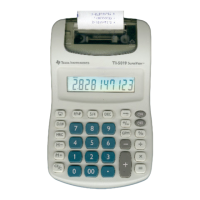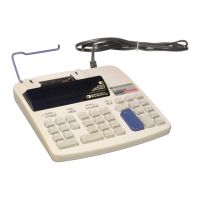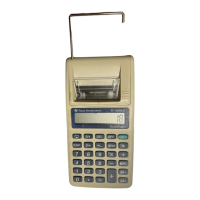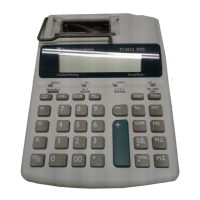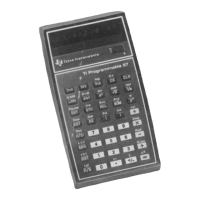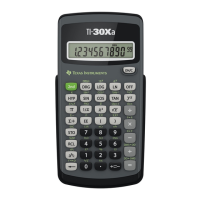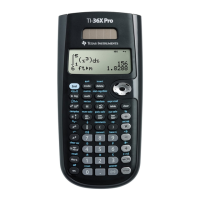Do you have a question about the Texas Instruments TI-55 and is the answer not in the manual?
| Type | Scientific |
|---|---|
| Display Type | LED |
| Display Digits | 10 |
| Power Source | Battery |
| Power | 9V |
| Memory Registers | 1 |
| Programming Steps | Not programmable |
| Functions | Trigonometric, Logarithmic |
Enables expression entry in stated order with parentheses for accurate interpretation.
Covers arithmetic, trig, hyperbolic, log, factorial, percent, y^x, root, pi functions.
Provides 10 memories for storing/recalling data with memory arithmetic capabilities.
Includes standard display, sci/eng notation, fix-decimal, and auto-clearing features.
Discusses 32 program steps, portability, and unit conversions.
Covers initial charging, battery life, power switch, and auto-display shutdown.
Explains digit keys, decimal point, Pi key, and standard display format.
Details EE, +/-, CE, CLR, and 2nd CA keys for operations and clearing.
Explains using 2nd/INV keys and display formats like scientific notation.
Allows selective choice of digits shown after the decimal point.
Explains +, -, x, ÷, =, x:y keys and their basic arithmetic functions.
Details hierarchy of operations and parentheses for precise expression evaluation.
Covers reciprocal, factorial, logarithms, and powers of 10 and e.
Explains sin, cos, tan, sinh, cosh, tanh functions and their inverses.
Covers square root, y^x, x√y, and percent calculations.
Explains angle modes (degrees, radians, grads) for trigonometric functions.
Explains STO n and RCL n keys for storing and retrieving data from memory.
Covers SUM n, INV SUM n, Prod n, INV Prod n keys for memory arithmetic operations.
Explains the EXC key for exchanging display and memory content.
Explains constant calculations and unit conversions.
Covers Mean, Variance, Standard Deviation calculations.
Details linear regression, slope, intercept, correlation, and trend-line analysis.
Demonstrates adding vectors using coordinate conversion methods.
Shows calculating the area of irregular polygons using geometric formulas.
Introduces programming for automating tasks and explains basic keys (Lrn, Rst, R/S).
Demonstrates programming for mail order, conversions, area, and graphing.
Covers loops, zero check, derivatives, and differential equations.
Provides notes on memory usage and key sequences for programming.
Discusses normal operation, battery charging, adapter use, and storage.
Instructions for safely removing and replacing the calculator's battery pack.
Lists common problems and their potential causes for self-diagnosis.
Explains flashing display and lists reasons for calculator errors.
Provides contact info for support, service, and warranty details.
Discusses rounding, guard digits, and the impact on calculation accuracy.
Explains how accuracy can deteriorate near function limits or with large angles.
Explains the two-digit key codes used to represent keystrokes in programs.
Lists formulas for circumference, area, and volume of common geometric shapes.
Lists trigonometric relations, laws of exponents, and logarithms.
Details warranty coverage, duration, performance, disclaimers, and service facilities.
